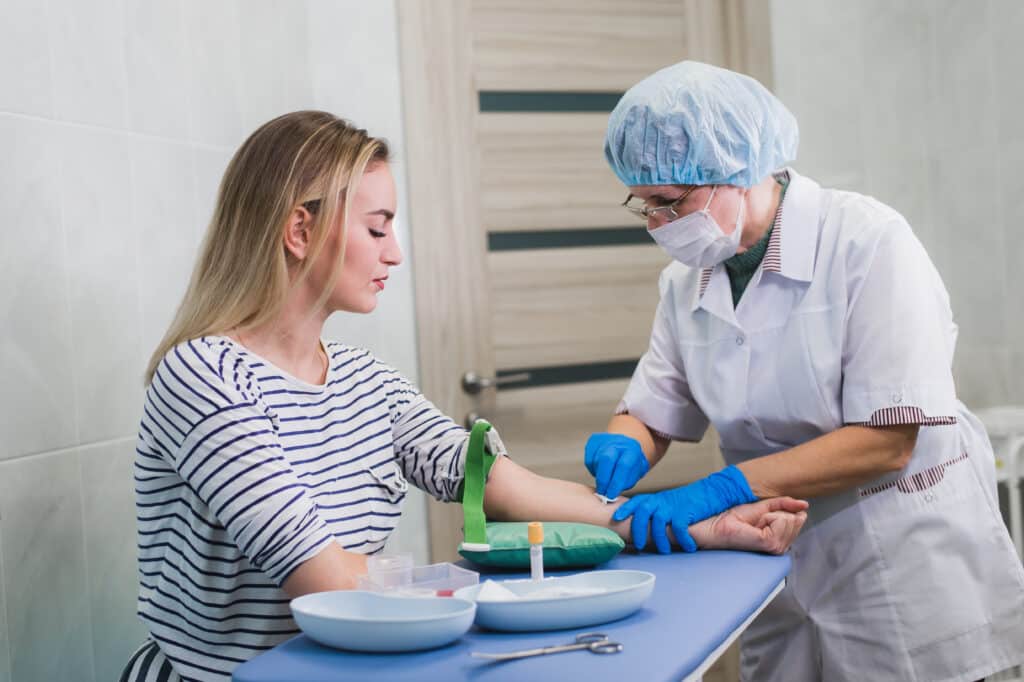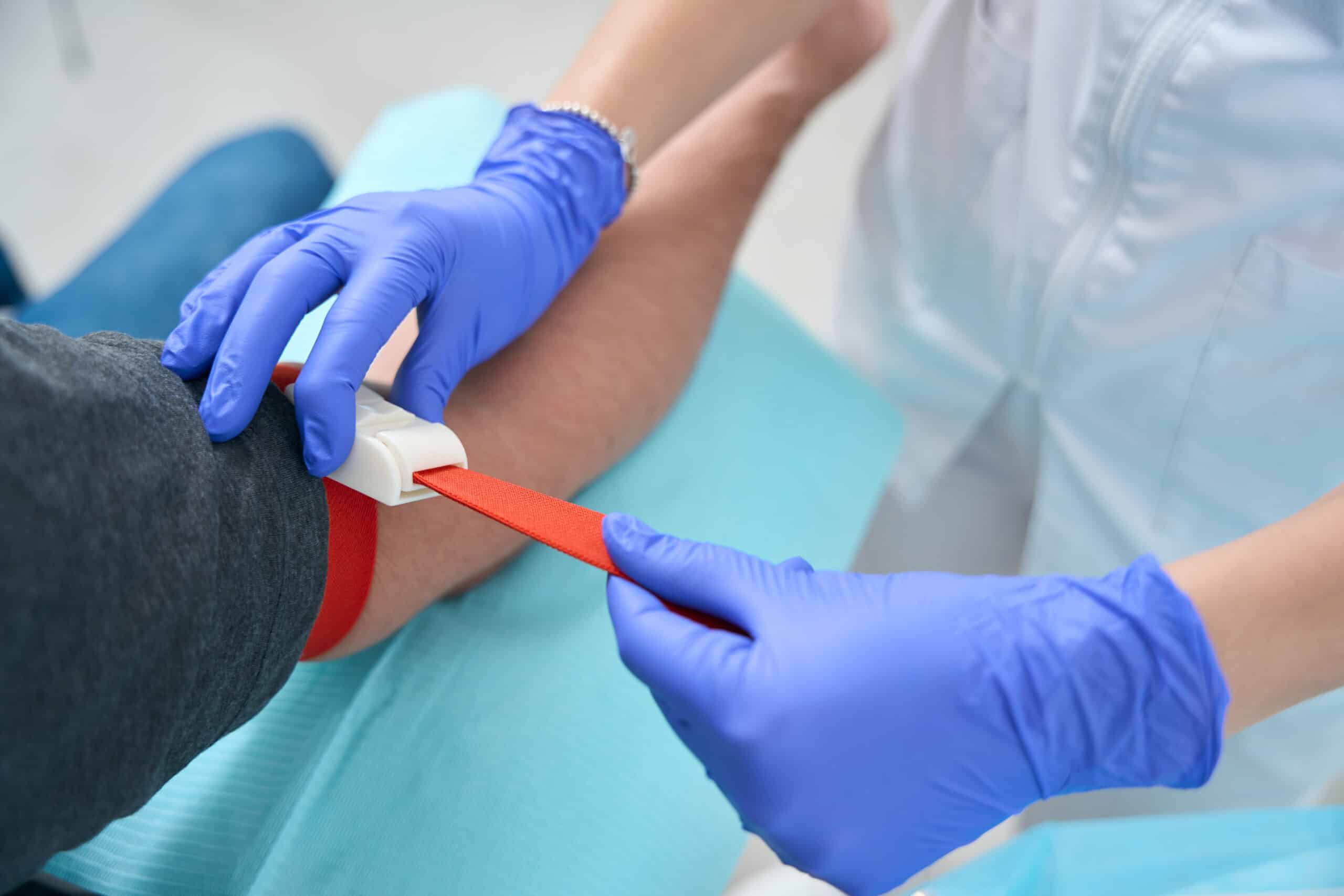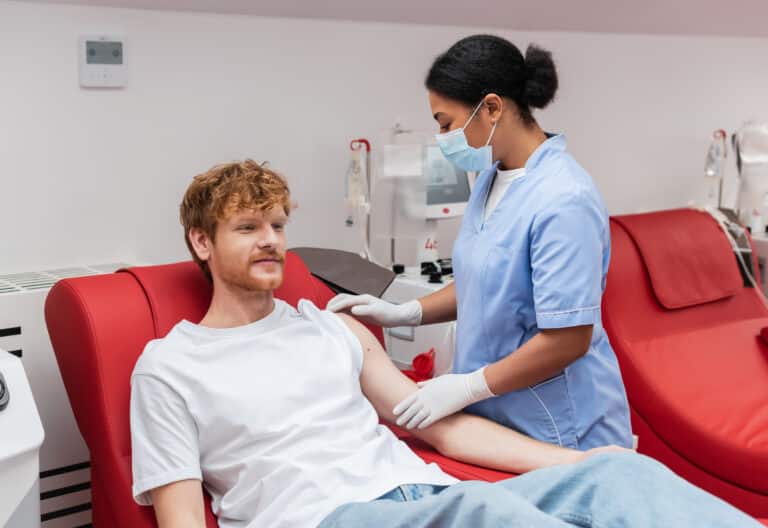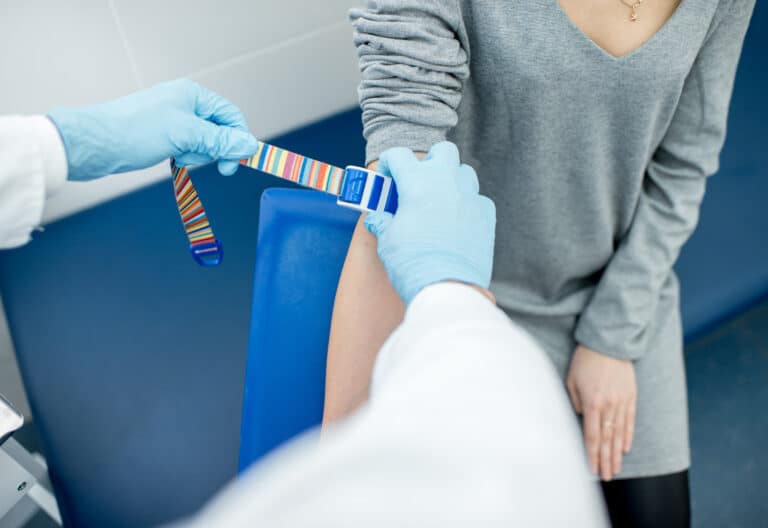If you’re considering a career as a phlebotomist, you’ve come to the right place! While many people associate phlebotomists solely with drawing blood, this profession encompasses a variety of important tasks that are crucial to the healthcare system. In this article, we will explain exactly what does a phlebotomist do and we’ll take a deep dive into the top 7 job duties, shedding light on what makes this role both challenging and rewarding.
1. Drawing Blood: The Core Responsibility
Yes, it’s obvious, but drawing blood is the phlebotomist’s primary role and the foundation of what they do. Phlebotomists are the unsung heroes of healthcare; whenever a doctor orders a blood test, they step in to perform the task. Known in the medical field as phlebotomy technicians, these professionals specialize in drawing blood from patients, using techniques like venipuncture (drawing blood from a vein) or finger pricking.
Phlebotomists play a critical role in aiding doctors with accurate diagnoses, monitoring health conditions, and saving lives through blood donations and transfusions. While the technical skill of drawing blood is important, so is the phlebotomist’s ability to handle patients with care and efficiency. This skill often sets the tone for the rest of the patient’s healthcare experience.
2. Patient Identification and Preparation
Phlebotomists often serve as friendly faces greeting patients when they enter a hospital, clinic, or diagnostic laboratory. The process starts with verifying the patient’s identity and preparing the necessary equipment. Proper identification ensures that the right tests are conducted on the right patients, minimizing errors.
Next comes patient preparation, which includes explaining the procedure, addressing any concerns, and making the patient feel comfortable. This is crucial, especially for patients who are nervous or have a fear of needles. A calm and friendly demeanor can go a long way in making the process smooth and stress-free for both the patient and the phlebotomist.
This is where people skills come into play. Phlebotomists must be empathetic and reassuring, often chatting with patients to ease their anxieties. Their interaction can make a significant difference in the patient’s overall experience, potentially turning a daunting process into a more comfortable one.
3. Safety and Infection Control
Safety is a top priority in healthcare, and phlebotomists are no exception. Phlebotomists must strictly follow safety protocols to minimize the risk of infection for both themselves and the patients. This includes wearing personal protective equipment (PPE) such as gloves, masks, and gowns, as well as properly disposing of used needles and maintaining a sterile environment.
Phlebotomists also play a role in quality control by ensuring that they draw the appropriate amount of blood and that the samples are suitable for testing. For instance, collecting too much or too little blood can lead to inaccurate test results or the need for a repeat procedure, which can be distressing for the patient. Adhering to safety protocols and quality control measures ensures both the safety of the patients and the integrity of the diagnostic process.

4. Labeling and Recording Specimens
After collecting the blood, the next crucial step is labeling the specimens accurately. Proper labeling with the patient’s information, date, and type of test is essential for ensuring the right samples are tested and that the results are correctly attributed to the appropriate patient.
In addition to labeling, phlebotomists must also document the procedure in the patient’s medical records. This documentation is vital, especially if the patient is undergoing multiple tests, like an EKG or ultrasound. Keeping an updated medical record is part of maintaining a seamless healthcare experience for the patient, and it requires meticulous attention to detail.
5. Transporting Specimens
Once the blood samples are collected, phlebotomists are responsible for transporting them to the laboratory for testing. Proper handling and timely transport of these specimens are crucial to maintaining their integrity. Just like an agent on a mission, the phlebotomist must ensure the samples reach the lab securely and without any compromise to their quality.
Phlebotomists often follow specific protocols for different types of samples. For example, some specimens need to be kept cool, while others require room temperature. This level of care in specimen handling is necessary to produce accurate test results.
6. Maintaining the Equipment
A phlebotomist’s toolkit typically includes needles, tubes, syringes, and lancets. It’s the phlebotomist’s responsibility to regularly inspect and maintain this equipment to ensure it’s functioning properly and meets safety standards. Regular maintenance is essential to prevent accidents, ensure patient safety, and comply with healthcare regulations.
If there are any issues with the equipment, phlebotomists must report it to management immediately. In some facilities, they may also be in charge of inventory management, ensuring that supplies are stocked and ready for use. Proper equipment maintenance contributes to a smooth and safe blood collection process.
7. Clerical Duties and Team Collaboration
Phlebotomists do more than just hands-on blood collection; they also handle various clerical duties. Updating a patient’s medical record after a blood draw is one of these tasks. They may also be responsible for scheduling appointments, organizing paperwork, and managing records related to blood collection.
Teamwork is another key aspect of the phlebotomist’s role. Phlebotomists work closely with doctors, nurses, medical assistants, and laboratory technicians to ensure the smooth functioning of healthcare facilities. They are like the “Nick Fury” of the blood collection team, coordinating and collaborating with others to ensure patient care is seamless and efficient.
Occasionally, phlebotomists may be asked to take on additional administrative or clerical responsibilities, especially in smaller healthcare settings. These can range from managing patient files to assisting in setting up diagnostic equipment, demonstrating the versatility required in this role.

Final Thoughts
The role of a phlebotomist is far more comprehensive than simply drawing blood. From patient interaction to safety protocols, specimen handling, and teamwork, phlebotomists are essential players in the healthcare system. Their efforts directly impact patient care, aiding in diagnoses, monitoring health conditions, and even saving lives.
If you’re passionate about helping others and interested in starting towards a career as a phlebotomist, there are ways to fast-track your journey.
Jumpstart Towards Your Healthcare Career with Preppy’s Fast-Track Phlebotomy Certification!

Preppy’s phlebotomy certification program offers a fast, affordable, and fully online path to becoming a certified phlebotomy technician. Here’s what makes our program stand out:
Program Highlights:
- No Prior Experience Needed: No college degree or healthcare experience is required to enroll.
- Complete Flexibility: Study at your own pace, entirely from the comfort of your home.
- Finish Fast: You could get certified in as little as 2 months, compared to traditional programs that can take up to 2 years.
- Trusted Education Partner: The program is in partnership with Auburn University, a 150-year-old accredited nonprofit university.
- Hands-On Experience Included: Gain real-world experience through an externship opportunity at one of our partner locations. Complete the required blood draws for certification!
Why Choose Phlebotomy?
- Vital Role in Healthcare: Phlebotomists collect blood samples, which are essential for diagnosing illnesses and medical conditions.
- Make a Difference: Help patients feel calm and comfortable during blood draws, especially those with a fear of needles.
- Growing Demand: The field is expected to grow 24% from 2018 to 2028, far outpacing the average for other occupations (According to recent data from the BLS http://bls.gov).
- Job Security: With medical advancements and an aging population, phlebotomy technicians will continue to be in high demand.
Embark on an exciting and rewarding career in healthcare with Preppy’s online certification program!
Also read: 5 Facts You Should Know About Phlebotomy Classes
About:
Preppy was founded by higher education expert, Grant Aldrich, whose work on college affordability and accessibility has been featured in Forbes, Bloomberg Businessweek, Business Insider, American Express, AOL, MSN, Thrive Global, Reader’s Digest, Inside Higher Ed, Evolllution, EducationDive, and nearly 100 radio shows and podcasts.
Time is money. Instead of programs that could take 2 years, Preppy provides you with education in a few months through immersive online training.
Healthcare, IT, Business, Trades…Preppy gets you ready for the trending careers in our modern economy.
Our team of higher education and startup veterans has created the best solution so everyone can obtain the emerging careers of today and tomorrow.
We look forward to speaking with you. You may also call 800-729-1317.
phlebotomyWhat Does a Phlebotomist Do





